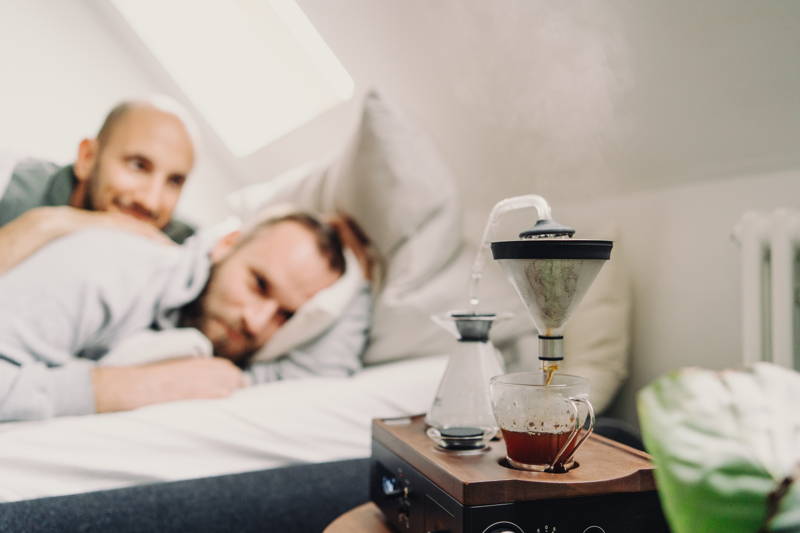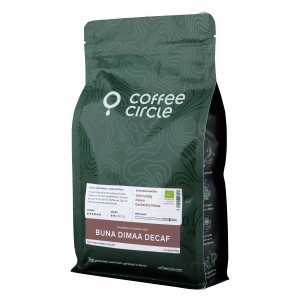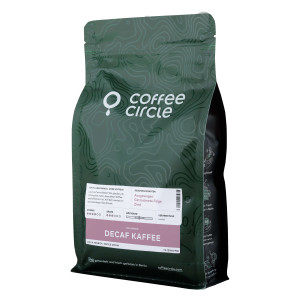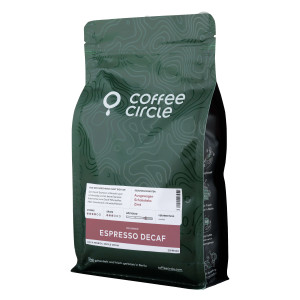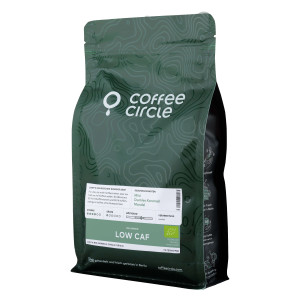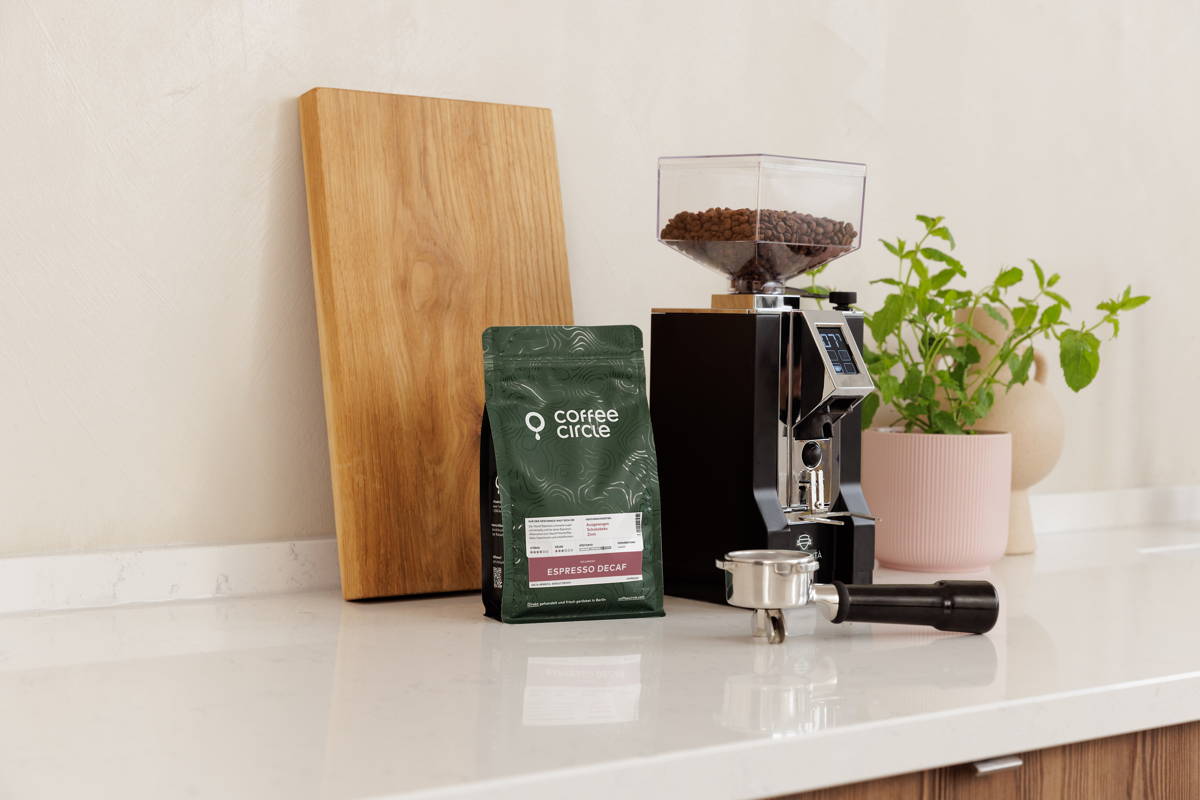

A contribution from Die Redaktion in the category #Coffee Knowledge from 1 March 2023
You know what it’s like: your morning coffee is the first thing to wake you up for the day. Other people prefer to forgo the caffeine boost, but still like to drink coffee. Our decaffeinated coffee from Coffee Circle is so popular because it doesn’t have a stimulant effect and still offers the full taste experience.
But why decaffeinate coffee and how does it actually work? Decaffeinated coffee is especially good for people with a caffeine intolerance; or for anyone who simply wants to consume less caffeine. There are three stages to decaffeinating coffee beans: 1. steaming, 2. decaffeinating using a solvent, and 3. drying.
But who came up with the idea of decaffeinating coffee beans in the first place, and is decaffeinated coffee healthy? Find out more here.
1903: The invention of decaffeination
The development of decaffeinated coffee dates back to 1903. Ludwig Roselius, a coffee merchant from Bremen and founder of „Kaffee HAG,“ attributed his father’s death in part to increased coffee consumption.
He then developed the Roselius process named after him – in which he first soaked the whole beans in salt water to swell them, and then used benzene to extract the caffeine from the bean. Benzene is now considered carcinogenic and is no longer used for this process. There are now less risky processes that have the same effect.
How is coffee decaffeinated today?
Ideal decaffeination involves removing the caffeine from the bean without altering the bean in any way. It is obvious that such ideal removal encounters great difficulties. Undesirable side effects include loss of flavors, changes in cell structure, or the retention of solvent residues. According to the EU directive, minimal solvent residues may be present in decaffeinated coffee, but CO2 and water are harmless as solvents during decaffeination.
Today, there are numerous processes for decaffeinating coffee. To produce decaffeinated coffee, three steps are followed:
- Steaming
- Application of a solvent
- Drying
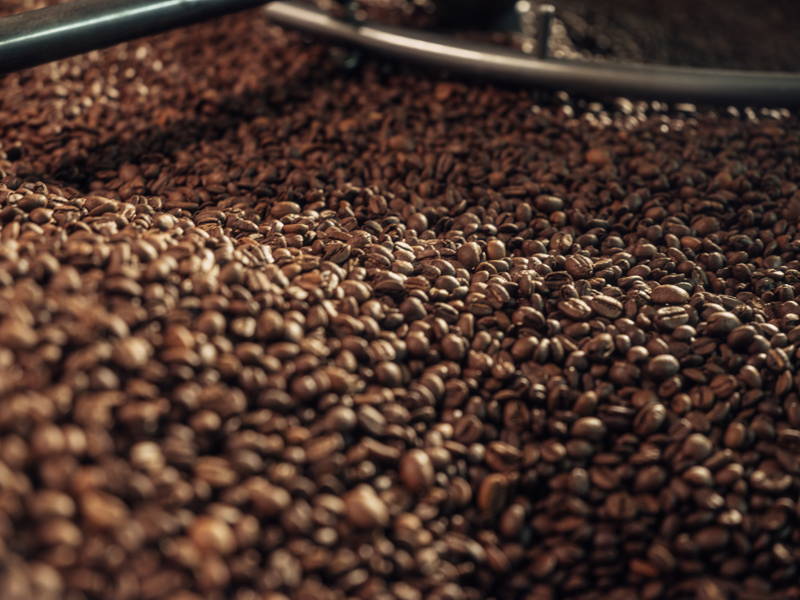
1. Steaming
First, the green coffee is brought into contact with steam and water. This makes the bean surface and the cell structure permeable to caffeine contained in the bean.
2. Application of a solvent
After steaming, the beans are decaffeinated by extraction with solvent.
While various ideas and solvents were used for decaffeination in the last century, four solvents are mainly in use today:
- Dichloromethane
- Ethyl acetate
- Carbon dioxide
- Water
The limited solubility of caffeine in the respective solvent usually forces several extraction processes until the beans only have a caffeine content of 0.1%. This is the limit for decaffeinated coffee as specified by the EU.
A variety of solvents have been shown to be suitable, but for cost reasons only two are commonly used: Dichloromethane and ethylacetate. Dichloromethane, however, is suspected of being carcinogenic.
An alternative solvent that is also used for decaffeination is carbon dioxide. Here, circulating liquid carbon dioxide under high pressure is used to extract the caffeine from the green coffee in an extraction vessel. The extraction takes place in a closed system in a cycle in which the CO2 is loaded with caffeine, from which it is separated again in a separator before being pumped back into the extraction tank and through the coffee. This process is repeated until the coffee is largely free of caffeine (caffeine content of only 0.1%). Compared to other solvents, less caffeine is dissolved, but CO2 is a fairly selective solvent, readily available and, above all, physiologically harmless.
Another alternative is the Swiss-water process. This is chemical-free, but all the more complex.
Coffee beans are mixed with decaffeinated green coffee extract, which transfers the caffeine from the beans into the solution. The green coffee extract, now saturated with caffeine, is passed through a bed of activated carbon, which absorbs the caffeine. The aqueous extract, now decaffeinated again, is again added to fresh coffee beans. This process is repeated until the desired degree of decaffeination is achieved.
The EU guideline value for "caffeine free" coffee is 0.1%.
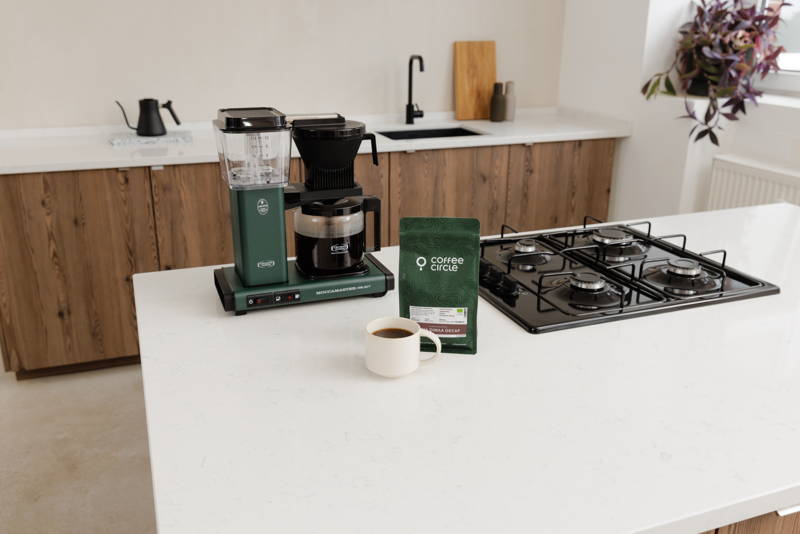
3. Drying After decaffeination, the original moisture content is restored by drying with air. Drying at low temperatures helps to minimize the decomposition of aroma substances.
After decaffeination, the original moisture content is restored by drying with air. Drying at low temperatures helps to minimize the decomposition of aroma substances.
How do we decaffeinate our decaf products?
Our Coffee Circle Decaf Coffee and Espresso Decaf are decaffeinated using ethyl acetate.
For a long time, decaf had the reputation of being inferior in taste, which unfortunately was usually the case. But after a long search, we found it at the Unichaparral cooperative in Tolima, Colombia. Full-bodied, sweet, nuanced – taste-wise, you won’t notice this coffee lacks caffeine.
Our Coffee Circle Buna Dimaa Decaf is decaffeinated with natural source carbon dioxide (liquid carbon dioxide).

Is decaffeinated coffee healthy?
In the most common processes, the raw coffee beans first swell in hot water or steam and are then treated with the solvent dichloromethane for around 10 hours. Dichloromethane is not harmless, as it is suspected of causing cancer. However, it is still used.
We, on the other hand, rely on variants such as ethyl acetate or liquid carbon dioxide. It is important to us that the quality of our coffee is always maintained – with or without caffeine.
Decaffeinated coffee is a good alternative to conventional coffee, especially for older people. Even younger coffee lovers sometimes find it difficult to control their daily caffeine intake. Some drink three to five cups a day. This is equivalent to 400 mg of caffeine, which is already the maximum amount of caffeine that healthy adults should consume.
If you often consume too much caffeine during the day and still don’t want to give up coffee, you can replace one or two cups with decaffeinated coffee. If you have problems sleeping, it is a good idea to drink only decaffeinated coffee after a certain time. In this way you will ensure a good night’s sleep!
